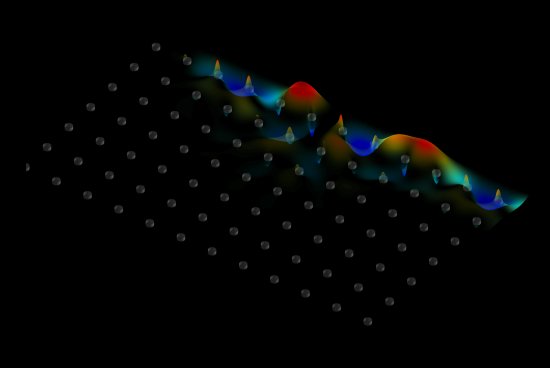
In the week that three pioneers of optical communications have been awarded with the ultimate prize in physics, new research outlines an experimental breakthrough that could lead to a new generation of highly efficient optical fibres.
Researchers in the US have unveiled a new version of a device known as a photonic crystal, which they claim can transport microwaves with significantly less loss due to scattering. If the device could be scaled down to operate at optical wavelengths it could improve the quality of optical communications.
In addition to its practical potential, the function of the device also represents an analogy of a well known quantum phenomenon – the quantum Hall effect.
Guiding light
“This is an exciting development! It potentially allows construction of channels, which allow photon modes to travel along winding paths with no back-reflection at bends,” said Duncan Haldane at Princeton University who predicted the effect last year but was not involved in this latest research.
Photonic crystals are structures that are designed to trap and guide light in a similar manner to the way electrons are manipulated inside a semiconductor. Where semiconductors contain electronic bands in which electrons of a specified energy range cannot reside, photonic crystals are also layered to prevent transmission of light at certain wavelengths – creating a “photonic band gap”.
These materials have found widespread application in the optics industry, with optical fibres being one particularly promising application. Because light can be trapped and guided along channels roughly the same width as the wavelength of light, it means that less energy is lost through scattering by the intrinsic roughness of the fibre.
Asymmetry is the key
Now, Zheng Wang and his colleagues at the Massachusetts Institute of Technology (MIT) may have discovered a way of reducing the scattering further still. Their new type of photonic crystal could make it possible to confine light to the outer edges of the material where it loses its “time reversal-symmetry”. In simple terms this means that photons only move in one direction and therefore cannot be back-scattered. This would mean that the only way light could be attenuated is from non-linear effects or absorption.
The key to achieving this effect was to make a photonic crystal containing iron-based rods. Wang and his team realized that applying a magnetic field perpendicular to the direction of electromagnetic radiation forces photons into so-called chiral edge states (CESs). This optical effect is analogous to the phenomenon experienced by a 2D electron gas when it is exposed to a strong magnetic field, known as the quantum Hall effect.
To demonstrate the effect, the physicists created a periodic structure that works at microwave frequencies. In principle, the same structure could now be scaled down to trigger the same effect at optical frequencies.
Referring to the realization of Haldane’s prediction, Wang told physicsworld.com, “We were inspired by his theory and found that CESs exist in a more general class of photonic crystals and performed numerical calculation to support that.” Adding, “Because of the generality of our theory, we were able to construct a design that is practically feasible and use off-the-shelf materials”.
This research appears in the latest edition of Nature .



